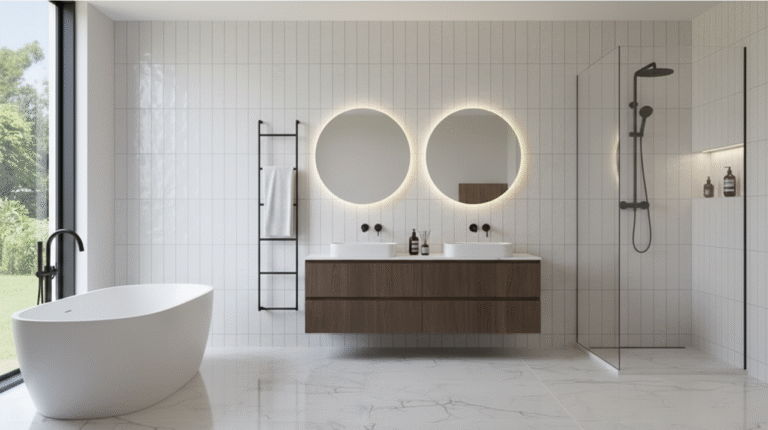When planning a home improvement project, picking the right tiles is one of the most important steps. A key part of this decision is knowing whether a tile is meant for the floor or the wall. Although they may look similar, floor and wall tiles are made differently and serve different purposes. In this guide, we’ll break down the differences, show you how to identify each type, and explain why using the right tile in the right place matters.
Floor Tiles vs. Wall Tiles: The Basics
1. Purpose
- Floor Tiles: Built to handle weight, constant foot traffic, and everyday wear. They’re tough, resistant to scratches, and strong enough for heavy loads.
- Wall Tiles: Lighter in weight and meant for vertical surfaces. They enhance appearance but aren’t designed to bear pressure like floor tiles.
2. Surface Finish
- Floor Tiles: Often textured to reduce slipping, especially in bathrooms and kitchens.
- Wall Tiles: Smoother, as grip isn’t a concern on walls.
3. Thickness
- Floor Tiles: Thicker and sturdier to withstand stress from walking and furniture.
- Wall Tiles: Thinner and lighter since they don’t carry weight.
4. Strength
- Floor Tiles: Made to last through impact, movement, and heavy use.
- Wall Tiles: Strong enough for walls but not suited for floor-level stress.
How to Identify Whether a Tile is for Floors or Walls
- Check the Label/Specifications – Manufacturers clearly state whether tiles are for floors, walls, or both.
- Feel the Surface – Textured or rough = usually floor tile. Smooth = often wall tile.
- Measure Thickness – Tiles 8mm or thicker are generally for floors; thinner ones (around 6mm) are likely wall tiles.
- Look at the PEI Rating – Higher ratings (III–V) are good for floors; lower ratings (I–II) are meant for walls.
- Check Standards (ANSI) – Tiles labeled ANSI A137.2 are fit for floors, while ANSI A137.1 usually applies to walls.
- Check Slip Resistance (COF) – Floor tiles need higher COF for safety in wet areas. Wall tiles can have a lower rating.
- Inspect the Edges – Floor tiles often have rectified or pressed edges for tighter joints, while wall tiles may have cushioned edges.
Why Choosing Correctly Matters
- Durability: Using wall tiles on the floor can lead to cracks, chips, and fast wear.
- Safety: Floor tiles reduce slip risks; wall tiles don’t.
- Design: Each type is made with its purpose in mind, ensuring style doesn’t compromise function.
- Installation: Floors and walls may need different adhesives and methods.
- Cost Savings: Picking the right tiles prevents costly repairs or replacements later.
✨ In short, the difference between floor and wall tiles comes down to strength, thickness, texture, and purpose. Knowing how to spot these differences helps you make the right choice and ensures your project lasts long while looking great.




